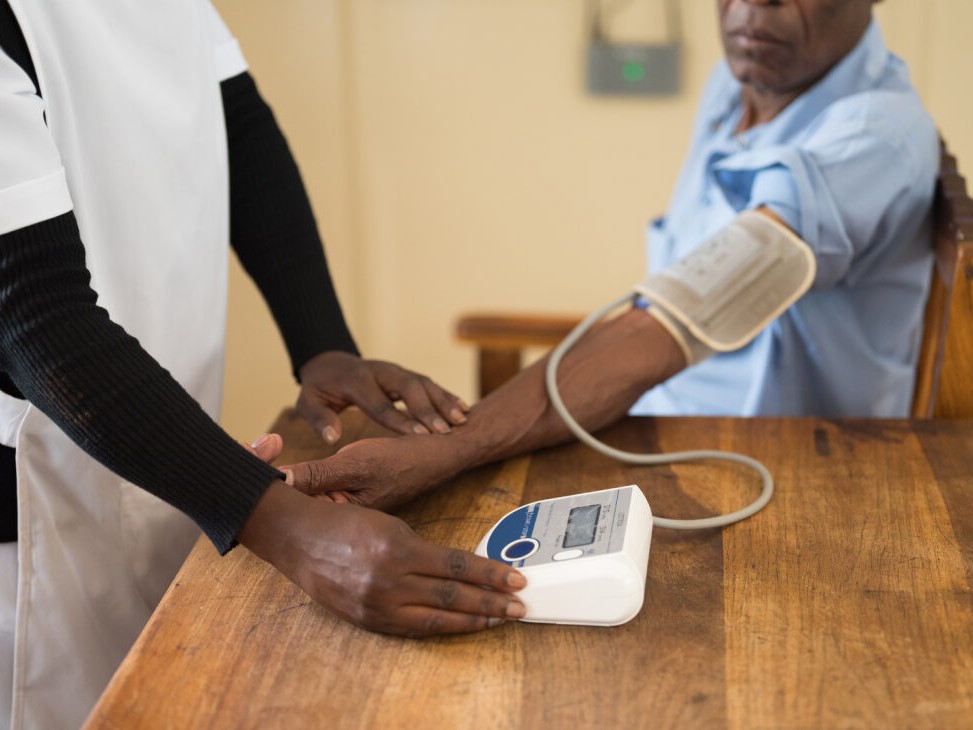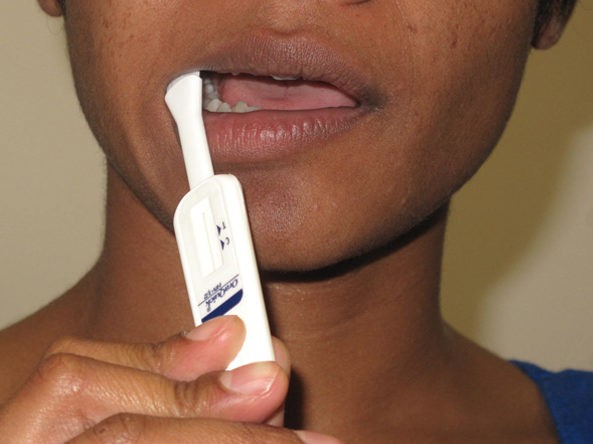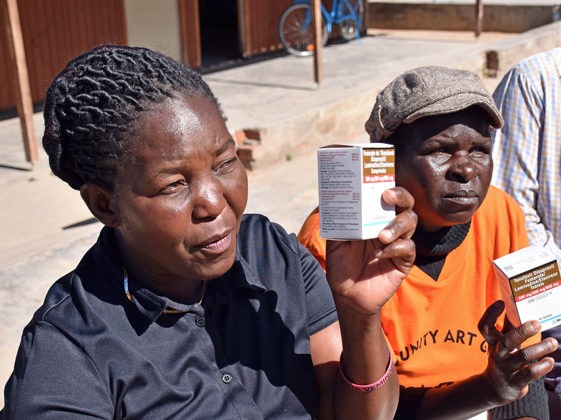Article and Study Summary:
Pitavastatin to Prevent Cardiovascular Disease in HIV Infection
Published in:
N Engl J Med. 2023;389(8):687-699.
https://www.nejm.org/doi/full/10.1056/NEJMoa2304146
Authors:
Steven K. Grinspoon, M.D., Kathleen V. Fitch, M.S.N., Markella V. Zanni, M.D., Carl J. Fichtenbaum, M.D., Triin Umbleja, M.S., Judith A. Aberg, M.D., Edgar T. Overton, M.D., Carlos D. Malvestutto, M.D., M.P.H., Gerald S. Bloomfield, M.D., M.P.H., Judith S. Currier, M.D., Esteban Martinez, M.D., Ph.D., Jhoanna C. Roa, M.D., et al.
Summary
The multi-country, phase 3 Randomized Trial to Prevent Vascular Events in HIV (REPRIEVE) study evaluated the efficacy and safety of using a low-dose statin to prevent atherosclerotic cardiovascular (CV) disease in people living with HIV. Adults aged 40 to 75 years on stable antiretroviral therapy and considered to have low-to-moderate risk of CV disease were enrolled across 12 countries. Participants were randomized (1:1) to receive oral pitavastatin calcium (4 mg/day) or a placebo. The primary outcome was the occurrence of a major adverse CV event, which was a composite of CV death; myocardial infarction; hospitalization for unstable angina; stroke; transient ischemic attack; peripheral arterial ischemia; revascularization of a coronary, carotid, or peripheral artery; or death from an undetermined cause. The study was stopped early for efficacy after a median follow-up of 5.1 years. Participants who received pitavastatin were significantly less likely to experience a major adverse CV event than those who received placebo. There were no unexpected safety concerns in the pitavastatin group. This study provides evidence on the benefits of low-dose statins for primary prevention of CV disease in people living with HIV considered to be at low-to-moderate risk of CV disease.
Discussion Questions:
1) How could the findings in this study impact policy where you work?
2) What would it take to implement the study intervention in the programs you work with? Do you have any experiences to share?
Please share your thoughts and experiences with us in the comments section below.
Full Synopsis:
PDF version available in English, French, and Spanish.
Study Summary
The multi-country, phase 3 Randomized Trial to Prevent Vascular Events in HIV (REPRIEVE) evaluated the efficacy and safety of using a low-dose statin to prevent atherosclerotic cardiovascular (CV) disease events in people living with HIV who are at low-to-moderate risk for CV events.
Study Setting
145 study sites in 12 countries: United States, Canada, Spain, Brazil, Peru, Haiti, Thailand, India, South Africa, Botswana, Uganda, and Zimbabwe.
Methods
- People living with HIV were eligible for inclusion if they were 40 to 75 years of age, on stable antiretroviral therapy (ART), had a CD4 cell count >100 cells/mm3 and had a low-to-moderate risk of atherosclerotic CV disease.
-
- Atherosclerotic Cardiovascular Disease (ASCVD) risk was determined by the 10-Year ASCVD risk score, in conjunction with fasting low-density lipoprotein (LDL) cholesterol thresholds based on ASCVD risk, and fasting triglycerides <500 mg/dL.
- The ASCVD risk score was calculated using the American Heart Association and American College of Cardiology 2013 Risk Calculator, which takes into account age, sex, race, total cholesterol, high-density lipoprotein (HDL) cholesterol, blood pressure and a history of diabetes, smoking, and treatment for blood pressure.
- Exclusion criteria included a history of statin use within the previous 90 days, known atherosclerotic CV disease and a history of allergy or severe adverse reaction to statins.
- Participants were randomized (1:1) to receive oral pitavastatin calcium (4 mg/day) or a placebo.
- All the participants received information on lifestyle modifications, and pitavastatin or placebo could be discontinued if clinically indicated statin therapy was initiated.
- The primary outcome was the occurrence of a major adverse CV event, which was a composite of CV death; myocardial infarction; hospitalization for unstable angina; stroke; transient ischemic attack; peripheral arterial ischemia; revascularization of a coronary, carotid, or peripheral artery; or death from an undetermined cause.
- Key secondary outcomes were a composite of a major adverse CV event or death from any cause; LDL and non-HDL cholesterol; and targeted safety events, including incident diabetes, liver injury, and myalgia, muscle weakness, or myopathy of grade ≥3 or treatment-limiting.
- The primary analysis was performed in an intention-to-treat population.
- A sensitivity analysis for the primary outcome excluded deaths of undetermined cause and supportive analyses were adjusted for CV and HIV-related factors.
- A per-protocol analysis was performed in which discontinuation because of a clinical need for statin therapy was not considered to be a treatment-discontinuation event.
Study Population and Follow-Up
- From March 2015 to July 2019, 10,865 individuals were screened, and a total of 7,769 participants were enrolled; 3,888 in the pitavastatin group and 3,881 in the placebo group.
- Of those enrolled, 4,095 were from high income countries, 1,423 were from Latin America and the Caribbean, 1,157 were from sub-Saharan Africa, 590 were from Southeast/East Asia and 504 were from South Asia.
- The median age of participants was 50 years (interquartile range [IQR], 45 to 55); 65.2% of participants were non-White, and 31.1% were women.
- The median baseline LDL cholesterol level was 108 mg/dL (IQR, 87 to 128), and the median CD4 cell count was 621 cells/mm3 (IQR, 448 to 827).
- The HIV viral load was undetectable among 87.5% of participants according to assays with limits of 20 to 400 copies/ml. Among 747 participants with quantifiable viremia, the median viral load was 62 copies/ml (IQR, 34 to 199).
- The median 10-Year ASCVD risk score was 4.5% (IQR, 2.1 to 7.0).
- The median duration of follow-up was 5.1 years (IQR, 4.3 to 5.9) and 83.0% remained in follow-up. Of these, 74.8% in the pitavastatin group and 71.0% in the placebo group were continuing to receive their randomized treatment at the time of the analysis.
- Initiation of statin therapy through clinical care occurred in 5.7% assigned to receive pitavastatin and in 9.6% assigned to receive placebo.
- For each year, >80% of the participants evaluated their average adherence to pitavastatin or placebo as very good to excellent.
Primary Outcome
- The incidence of major adverse CV events was 4.81 per 1,000 person-years in the pitavastatin group and 7.32 per 1,000 person-years in the placebo group (hazard ratio [HR], 0.65; 95% confidence interval [CI], 0.48-0.90; p=0.002).
- The effect of pitavastatin appeared to be generally consistent among subgroups, with some apparent differences according to hypertension status. In participants without hypertension, the effect of pitavastatin remained significant (HR 0.47, 95% CI 0.31-0.69), whereas no significant difference was found between groups among those with hypertension (HR 0.91; 95% CI 0.63-1.31).
- Myocardial infarction was diagnosed in 63 participants; 79.4% were determined to be type 1, and 20.6% were type 2.
- Sensitivity and supporting analyses that excluded deaths with an undetermined cause also favored the pitavastatin group, as did analyses that were adjusted for CV and HIV risk factors.
- In the per-protocol analysis, the effect of pitavastatin as compared to placebo was similar to the primary results (HR 0.67; 95% CI, 0.50-0.89).
Secondary Outcomes
- The incidence of a major adverse CV event or death from any cause was 9.18 per 1,000 person-years in the pitavastatin group and 11.63 per 1,000 person-years in the placebo group (HR, 0.79; 95% CI, 0.65-0.96).
- Treatment discontinuation because of adverse events occurred in 2.1% of participants in the pitavastatin group and in 1.2% in the placebo group.
- LDL cholesterol levels decreased from a median of 107 to 74 mg/dl at 12 months in the pitavastatin group and from a median of 106 to 105 mg/dl in the placebo group. Similar effects were seen regarding non-HDL cholesterol.
- The incidence of nonfatal serious adverse events was similar in the two groups: 4.16 per 100 person-years (95% CI, 3.86-4.48) in the pitavastatin group and 4.13 per 100 person-years (95% CI, 3.84-4.45) in the placebo group.
- A higher frequency of incident diabetes was seen in the pitavastatin group (incidence rate ratio [IRR], 1.35; 95% CI, 1.09-1.66) and a higher frequency of myalgia, muscle weakness or myopathy (grade ≥3 or treatment-limiting) occurred in the pitavastatin group (IRR, 1.74; 95% CI, 1.24-2.45). Muscle-related symptoms led to withdrawal of 1.1% of participants in the pitavastatin group and in 0.5% in the placebo group.
- Rhabdomyolysis and liver dysfunction (grade ≥3 alanine transaminase level) occurred rarely and had similar frequencies in the two groups, with IRRs of 0.75 (95% CI, 0.17-3.37) and 1.38 (95% CI, 0.56-3.43), respectively.
Critical Analysis
The multi-country, phase 3 REPRIEVE study found daily pitavastatin lowered the risk of major adverse CV events over a five-year period in people living with HIV on ART with low-to-moderate CV risk. The safety profile of pitavastatin was found to be acceptable, with no unexpected safety concerns.
The following points should be considered when interpreting the study findings:
- The data and safety monitoring board recommended stopping the trial early for efficacy in March 2023, and concluded that no unexpected safety concerns had been reported.
- People living with HIV are at increased risk of CV disease, which is thought to be in part due to residual inflammation and immune activation. Statin therapy simultaneously lowers LDL cholesterol, a main driver of atherosclerotic CV disease, and has beneficial effects on relevant inflammatory and immune pathways. The observed reduction in risk was larger than would be predicted based on achieved reduction in LDL cholesterol levels, which suggests statins may benefit this population beyond the effect of lowering LDL cholesterol.
- Pitavastatin was chosen because it does not interact with antiretroviral drugs. In settings where this drug is not available, alternative statin options should account for interactions with ART and other HIV-related medications.
- While a diverse, global sample was enrolled in the trial, more than half were from high-income settings and when compared to the global burden of HIV disease, populations from sub-Saharan Africa and women were disproportionately underrepresented.
- All trial participants were receiving ART at baseline, with good virologic control, which improves measures of immune activation and inflammation. The impact of pitavastatin in persons who are not receiving ART and/or are not virologically suppressed is unknown, but it may have a larger protective effect in this population given its beneficial effects on inflammatory and immune pathways.
- Pregnant women were excluded from participation in the trial, and women of reproductive potential had to be willing to use contraception. Statins are generally not considered to be safe in pregnancy, which should be considered when offering them to women of reproductive potential.
- The criteria used to define low-to-moderate CV risk in this study required computation of multiple metrics, including laboratory values, which may not be available in all settings. This may be a challenge to operationalizing this approach in resource-limited settings.
Implications
The multi-country, phase 3 REPRIEVE study found that daily pitavastatin lowered the risk of a major adverse CV event over five years of follow-up in people living with HIV on ART with low-to-moderate CV disease risk. The risk of CV disease is increased among people living with HIV, so data regarding primary prevention strategies in this population were needed. While people living with HIV who have known CV disease or are at high CV disease risk should be receiving statin therapy, these findings support prescribing low-dose statins in those with low or moderate CV disease risk, in addition to optimizing lifestyle factors.
This article synopsis was written by Dr. Cassia Wells. Share your thoughts on this article or suggest an article for Journal Club by emailing her at caw2208@cumc.columbia.edu.
Other articles of note:








